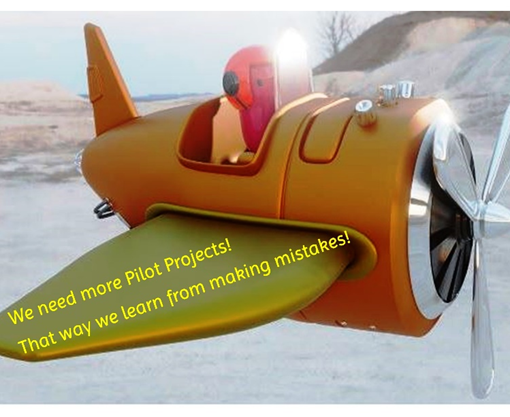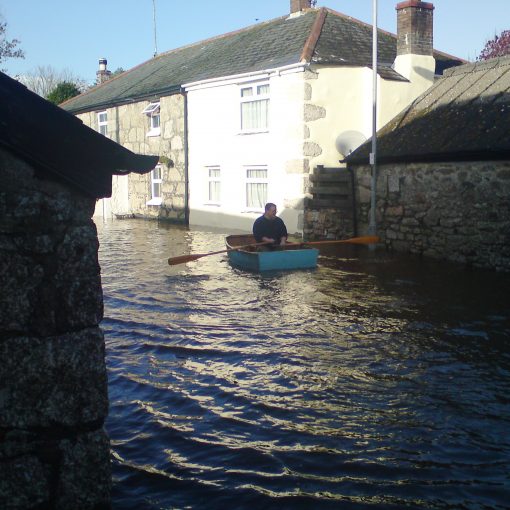May 17th
We start with swallows and cuckoos. And follow with a lot of other snippets beginning with C, including launch of a big Construction Topic kicked off in Correspondence.


Well folks, it is all very well in the depths of winter, having to give up a day and a half each week to writing the blog, but now the spring season for events and walks is getting into gear it is much more difficult. Yesterday I was beavering away with the team, making all sorts of improvements to the site and not seeing this blimin’ laptop for the entire day. Felt so good!
I have had a chat with a few readers, as to ‘shall I just pause the blog altogether?’ and the feeling is no. So, my intention, for a while, is to offer something a bit shorter. And make it a series of posts on a linked thread, all of which will evolve step by step out of a long email I received at the start of this week.
First though, to the birds. Swallows are swooping and diving joyfully, as the warm air is now full of flying insects. Good food 😊. Behind their twittering I also can hear sky larks. You’ll have to take my word, cos I don’t have the photographic skill to make the image very clear.

Yes, every year I rejoice if the swallows return, but why not cuckoos anymore? There are plenty of sightings dating back to mid-April across other parts of the country, especially in the New Forest and West Wales. https://www.birdspot.co.uk/first-cuckoo
Bird Spot says
The 14th April is St. Tiburtius Day and is traditionally when you will hear the first cuckoo, as celebrated in Rudyard Kipling’s Cuckoo Song:-
Cuckoo, bring your song here!
Warrant, Act and Summons, please,
For Spring to pass along here!
The first sighting is often in the far Southwest, in the Isles of Scilly and then gradually moves northwards. In recent years the cuckoo has tended to arrive on average five days earlier than usual, likely due to climate change.
So I wonder, does the cuckoo find Scilly Isles preferable to mid Cornwall? There is nothing to prove that, but apparently one much-frequented spot is in far off West Cornwall at ‘Cuckoo Valley’.
https://www.cornwallwildlifetrust.org.uk/nature-reserves/bostraze
About the reserve
Cuckoos are still a regular visitor to Bostraze. They arrive in the spring (from late April) and leave in June. Cuckoos are well-known brood parasites, the female lays her eggs in the nests of other birds, particularly meadow pipits.
There are two carnivorous plants here at Bostraze – round leaved sundew and pale butterwort. Both capture insects with their sticky leaves in order to obtain vital nutrients. They can be found in the wet, boggy areas, where cattle hoof-prints create bare ground for them to grow in.
The small red damselfly has become rare in West Penwith due to the draining of the wetland habitats. Our management of Bostraze’s wet grassland, mossy pools and the creation of seven ponds has created excellent breeding habitat for this species, which can now be seen here from July to September.
If you do go onto the page, there is also some brilliant stuff about marsh fritillary butterfly habitats, including Helman Tor just up the road from here.
Mysterious Water Bourne diseases starting with C – Cryptosporidium and Campylobacter
Hopefully not many of us have needed to know about these 2 illnesses, with their strange long titles. But this week, in the Brixham and Paignton areas of South Devon, ‘Crypto’ has been wreaking gut havoc. Once again South West Water have showed themselves in a poor light, as they kept saying it was safe to drink their water when it absolutely was not.
As of Friday evening the total of houses affected is 40,000. So far 386,000 bottles have been given out, but very long queues have been seen. £115 compensation, seems a very random offer, especially for the severe effects on tourism businesses, closing school etc.
A Mum described her little boy being sick and the vomit had blood in it; later he was admitted to A and E. Even sips of clean water have been causing vomiting and cannot be kept down.


Anthony Magnall, the MP says heads will have to roll, at the water company.
So how could this have happened? The official word is “we believe the potential source to be a faulty air valve, infected by water polluted by animal faeces.” Note the lack of clarity here. And let me say, having been through a somewhat similar episode of grim illness with my son when he was a toddler, I acknowledge it can be very tricky to pin down causes.
Cryptosporidium is a parasite (a tiny organism) that causes an infection called cryptosporidiosis affecting people and farm animals. Cryptosporidium is found in lakes, streams and rivers, untreated drinking water and sometimes in swimming pools.
You can get cryptosporidiosis directly from another person or animal by touching faeces, (for example when changing a nappy) and putting your hands near or in your mouth without washing them thoroughly. You can also get cryptosporidiosis from infected animals or by swimming in, or drinking contaminated water. Occasionally you can be infected by eating and drinking contaminated food, particularly unpasteurised milk, under cook meat and offal (liver, kidneys, and heart)
Tom caught this one:-
Campylobacter is a germ that lives harmlessly in the gut of many animals & birds. It infects the gut of humans and is a common cause of diarrhoea in people of all ages. The disease is present all the year round but tends to be more common late spring and early summer.
What are the symptoms? The time taken from picking up Campylobacter to becoming ill is usually between 2 and 5 days but can be as long as 11 days. Illness (symptoms) usually takes the form of: Diarrhoea – sometimes with blood; Abdominal (tummy) pain; Fever; Nausea (feeling sick) and/or vomiting; General tiredness These symptoms usually clear up within 4 – 7 days but a small number of people take weeks to recover fully.
How does it spread? The commonest route is by eating contaminated food. Raw (unpasteurised) milk poses a risk. Germs are found on uncooked meats (especially chicken) and can be spread by using knives and utensils such as chopping boards for both raw & cooked foods. Contact with infected animals & birds both farm and domestic (especially young animals under 6 months of age) carries a risk of infection. Birdfeeders & pecked top milk bottles could be a source of infection. Infected children can pass the infection to puppies and kittens, which in turn can infect other children. An infected person may contaminate foodstuffs by poor hand hygiene.
I still recall the trauma this outbreak caused, as I had to fill Tom with water and electrolytes over and over, to prevent severe dehydration. I also remember the GP wanted to pin the blame on someone and tried both my Mum with her small yappy dogs in the kitchen and my Dad, the farmer in contact with sheep, bullocks, dogs etc. Yuk.
Correspondence – big thanks to Stephen
Dear Caroline
I was interested to read the information concerning the installation of heat pumps in the Blog this week. My daughter and son in law are currently renovating their new house and will be needing a complete system for heating water and space in the house. There is very little of the past system that’s usable, but the option of using a heat pump or even going to adding solar panels is not attractive simply because of the cost.
That being said, they have just decided it will be best to install a new boiler and new cylinder and are discovering they must contend with an enormous number of possible alternatives proposed by different installers. As each one comes to the property, they bring a different idea as to what is required, how long it will take to install and how much it will cost – and this is with very familiar technology, which many installers are capable of installing. Gone are the days when the plumber came along and simply fitted a few radiators, a tank plus immersion heater and a standard gas boiler. Today’s boilers and cylinders need multiple safety valves, they need annual maintenance, they need skilled technicians to install them (because they’re pressurised) and they need a fair amount of space for control gear and other systems equipment.

However, the biggest problem with all of this is finding the skilled labour to make a decent installation. Without skill or experience of their own in this subject, how can the young people decide who is capable of the work, who is telling them what is actually required and will charge a fair price for it? Most systems installers are tied in some way to a favourite equipment supplier and will recommend their equipment – if you ask for anything beyond their recommendations then the costs mount up and, since you have made changes to the recommended system the installers will no longer guarantee the installation – even if the changes that you’ve made are an improvement and give you more of what you actually desire, like a larger reserve of hot water.
If we take a deeper look as to why this situation has arisen, it’s clear that the education system in this country is failing. Despite being in school for 14 years, most children leave without any skill worthy of a job at all. Almost the entire emphasis within the system is academic achievement. If every child left school with at least two practical job skills – say hairdressing and plumbing or cooking and car maintenance – then the skill shortage would not be so severe. What this lack of skills means is that despite there are many fantastic products on the market that do various amazing jobs in terms of improving energy efficiency, waterproofing, safety, strength and general enjoyment within a property, the biggest problem that occurs with all of these products is failure to install them correctly leading to a breakdown of some sort.
(Here Caroline is adding a commentary. Stephen is so right. Despite the government publishing the following page, by the end of Y11/post 16, the message is too late landing. The practical skills need to be learned in mid to late primary school and on in the secondary, not only for their own sakes – as Stephen points out – but also to get children off screens. I swear this is going to become a major problem and require a complete re-set of curriculum as a result. That may be the push we need).


In helping to renovate my daughter’s property it’s clear that even the most basic installation skills were not present when the house was built or upgraded in the past. The roofs leak, the damp courses have been breached, windows are draughty having been incorrectly installed, doors don’t open and close properly, there are many cracks in the walls due to insufficient foundations, timbers have been specified that are too thin, so ceilings have sagged and that’s just for a start. There are many other issues.
Returning to the school curriculum theme – most children have little or no idea how their built environment came about. Having been taught practically nothing about house building and maintenance, it’s little wonder that most people within society are completely incapable of achieving an energy efficient, well-built house. Most of the choices they make are completely superficial and have little or no impact in terms of the fitness for purpose of the property. If their property is below par, they are unlikely to be able to fix the problems.
Until we learn to value practical skills as equal to academic skills within our education system then this problematic situation will persist.
Stephen Tindall – Stergan, Poughill Road, BUDE Cornwall EX23 8NZ
NB Stephen was my architect and supporter through all of the renovations at Meadow Barns Cottage, and together we tackled numerous challenges. If any parent can steer their offspring through such a project it will be him!

Stephen and my favourite worker, Nick, sorted out the leaking upper window, caused by previous bodger builder!
Caroline continues
By a series of coincidences, this theme will hopefully continue and develop, as a project with schools. The approach will be hands-on, practical and a lot of outdoors activities. Here is the proposal that has gone to the various partners. My instinct is that we will only have time to work on number 1, but that is going to be a wonderful water restoration opportunity. (c) C. Stephenson Meadow Barns, 2024.

Future Events in Cornwall
We have 2 walks coming up this week, both of a somewhat experimental nature. Fingers crossed, we really need some sunny days!
Upcoming Events this week
May19 9:45 am – 12:00 pm
Follow in the Footsteps Walk
May21 10:30 am – 1:00 pm




